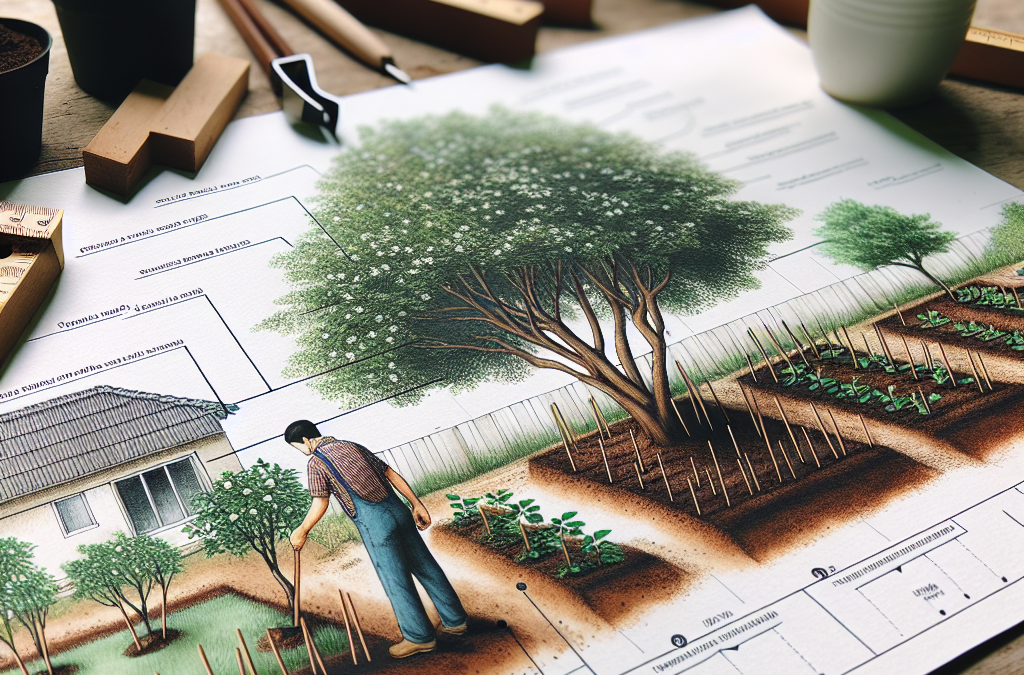Choosing the Right Location
Sunlight and Drainage
Finding the perfect spot for your orchard is crucial. Trust me, sunlight is your best friend! Most fruit trees need at least 6 hours of direct sunlight daily. I made the mistake of planting my first tree in a partially shaded area, and let me tell you, it didn’t produce much fruit that year!
Next up is drainage. You want your trees to have good drainage to prevent root rot. If your yard tends to pool water, consider raised beds or mounds when you plant your trees. I used some old bricks to create a small elevation, and it worked wonders!
Lastly, consider proximity to your home. Having your orchard close means you can easily check on your trees, and trust me, you’re going to want to! You’ll find yourself drawn to them often.
Choosing Your Trees
Understanding Your Climate
Not all trees thrive in every climate. When I first began my orchard journey, I excitedly bought all sorts of fruit trees without understanding the local climate. Big mistake! Do a bit of research to know what varieties will perform best in your area.
Local extension agencies or garden centers are fantastic resources. They can guide you on what grows well in your region. For instance, I now know that my zone is perfect for apples and pears but not so great for tropical fruits.
Also, consider disease resistance and pollination requirements. I learned the hard way that some trees won’t produce unless they’re paired with another tree for cross-pollination. It’s all about making the right selections!
Planting Your Trees
Soil Preparation
Before you even dig a hole, you’ll want to prepare your soil. I was so impatient with my first tree planting that I didn’t check my soil’s pH levels. Huge rookie mistake! Most fruit trees prefer slightly acidic to neutral soil.
I recommend testing your soil. Most local garden centers sell inexpensive kits, and it’s worth it! Adding organic matter like compost not only improves soil quality but helps retain moisture, which is a lifesaver in those hot months.
Once the soil’s ready, dig proper holes. They should be wider than the root ball. You want your tree to have ample space to spread its roots. When I did this, my trees established themselves much quicker!
Caring for Your Orchard
Watering and Mulching
Now that your trees are in the ground, it’s time to nurture them. Consistent watering is key, especially in the first couple of years. I learned not to let the ground dry out completely, which can shock young trees.
Mulching is another game-changer. I apply a thick layer around the base of my trees which helps retain moisture and suppresses weeds. Plus, it looks great! You can use shredded bark or straw—whatever you have on hand.
Keep an eye on the weather too. If it hasn’t rained in a while, don’t hesitate to give your trees a good drink. A friend once told me that trees are like pets; they need regular care and attention!
Pest and Disease Control
Identifying Threats
Pests are an unfortunate part of gardening, but with the right knowledge, you can keep them at bay. Start by inspecting your trees regularly. I look for any signs of trouble, like holes in leaves or sticky residues. Early detection is crucial!
Familiarize yourself with common pests in your area. I’ve had some run-ins with aphids and caterpillars that could’ve been easily avoided had I been more aware. A simple internet search can help you identify what might be lurking in your orchard.
Also, don’t forget about diseases. Knowing the signs of common tree illnesses can help you take action quickly. When I first spotted signs of a fungal issue, a quick spray of organic fungicide saved my tree from dying off!
FAQs
1. What types of trees should I start with for beginners?
It’s great to start with easy-to-care-for trees like apple, pear, or cherry. These varieties often have fewer disease problems and are generally more forgiving for new gardeners.
2. How far apart should my trees be planted?
This depends on the species you choose! Generally, most trees should be spaced anywhere from 10 to 20 feet apart to ensure they have room to grow and air can circulate.
3. When is the best time to plant my trees?
The best time to plant is typically in the early spring or fall, when the weather is cooler, and trees can establish their roots without the stress of summer heat.
4. How can I tell if my tree is getting enough water?
Check the soil! If it feels dry about an inch down, it’s time to water. Additionally, leaves may droop or turn yellow if your tree is under-watered.
5. Are there any organic methods for pest control?
Absolutely! Companion planting, using insecticidal soaps, or introducing beneficial insects like ladybugs can help manage pests without harmful chemicals.
So, there it is! A personal journey into starting a small orchard. It might feel daunting at first, but once you get the hang of it, it’s so rewarding. Happy planting!





